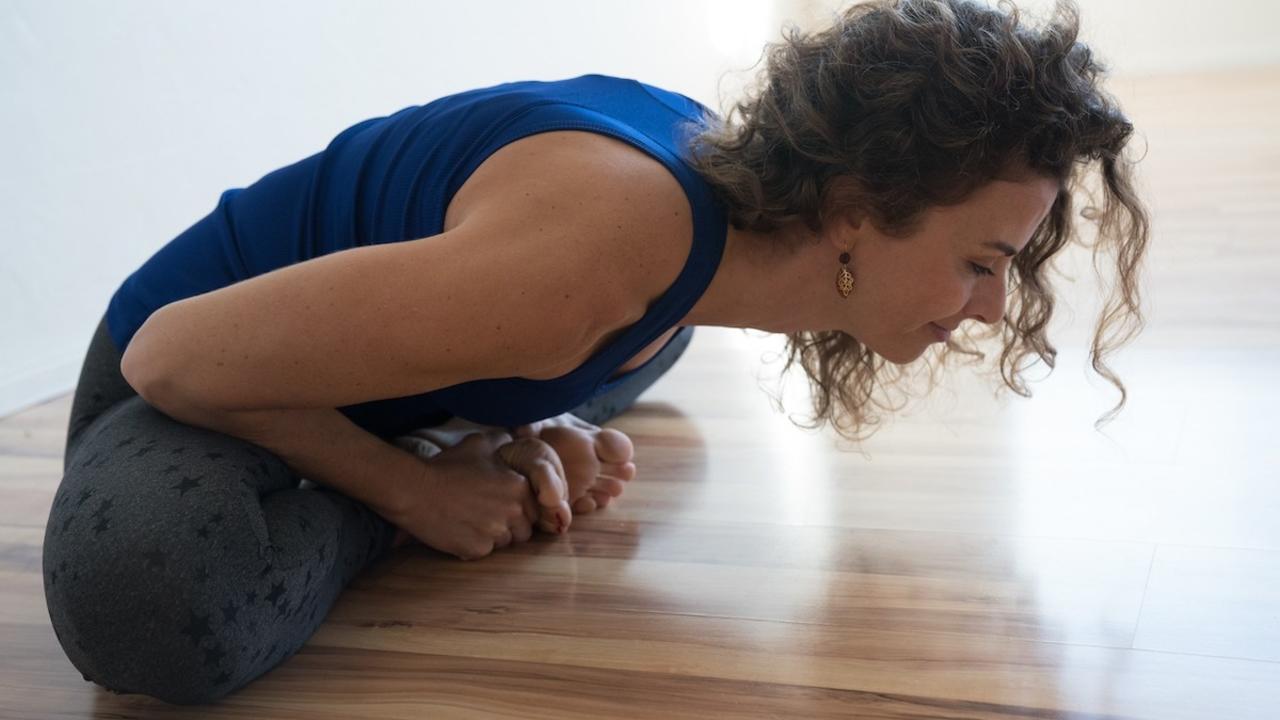
Goals: 0% Injury Rate
Feb 21, 2020In my last blog post I wrote about why I think Ashtanga Yoga is dangerous. There are a lot of injuries that can happen in the Ashtanga practice from either pushing too hard, carelessness or misinformation. And talking injuries can be a bit of a taboo subject. Students don’t tell the teacher that they are hurt, either because they don’t realize it until later, there is a shame regarding the injury, or my personal pet peeve - they don’t want to make the teacher feel badly.
There seems to be a common misconception in contemporary Ashtanga that injury is an acceptable, expected, or even glorified part of the practice. I think there’s a fairly open dialogue about it these days - the teachers in many workshops and trainings I’ve been to have talked about their goals of having no injuries, and I absolutely believe that we can accomplish a 0% injury rate in Ashtanga. While the system is a physically rigorous one, a holistic practice should be geared toward keeping your body healthy. A solid practice does not require something broken to create a need for reassembling. The attitude around injury should not be, "meh, it happens."
There’s certainly a difference between how people talk about injury in Ashtanga now versus how it’s discussed in some historical literature as it’s been transmitted from western practitioners to the modern day. Steering the community away from an ethos of injury has become an active goal of many contemporary teachers, but that doesn’t change the fact that much can get lost in translation - whether between a student and a teacher, a book and a reader, a muscle and a mind, the past and the present, or anywhere else along the way. There is a notable difference between the way teachers and writers discuss Ashtanga now than they might have when it first was brought to America. There has been a lot of loaded terminology around injury - phrases like healing, or opening, or all is coming - and harmful attitudes can be propagated incredibly easily. There are stories of students getting strong adjustments, hearing pops and cracks, feeling immense pain and then likening it to a healing. I'm here to tell you that practicing should not be painful and injuries do not have to happen.
Early transmissions of Ashtanga in the west did their very best to convey their messages, but the fact is simply that so much can get lost (and usually at the student’s expense). It’s important to remember that you are living and practicing in your own unique context. Just like you would with anything, ask yourself how whatever you’re reading or watching or listening to applies to your life, but also ask how it doesn’t. Look at these sources and make the distinction whether it’s practical wisdom to implement, or if it’s a more abstract idea to think about, or whether maybe it’s just something to leave behind altogether.
A book might tell you to practice Primary Series six times a week for three years before starting Intermediate, and this advice could easily lead you to injury, but its author might not still agree with the book they wrote 25 years ago, might not think of themselves as the same person, might not think that they really communicated what they were trying to communicate in saying that, and who's thoughts will have certainly changed from 25 additional years of practice. But people will still trust that book’s authority, and will still carry its good and bad messages alike to their mats. When I’m leading teacher trainings, I tend to get a lot of questions about things students read in books about yoga, and I always come back to the same feedback - more than any book could ever be, your practice is the source. The most valuable thing you have in yoga is your own experience; if your experience is telling you something doesn’t feel right, it probably isn’t.
So what’s my advice for avoiding injury? It’s actually quite simple.
- Tune into your body. Notice how you feel, notice any sensation, notice any pain, and adjust your practice to fit what your body is telling you. There might be day-to-day soreness, but the fact is that your practice shouldn’t have you in pain for days.
- Simple enough, is to talk and have open dialogue with your teachers and your fellow yogis. Shared experience and communication can be one of the very greatest sources of wisdom and learning.
Ultimately, it’s about figuring out what works for you. The words and thoughts of others might be completely irrelevant. Find your people - whether in person, online, in books, wherever - who you can communicate with, resonate with, and have meaningful dialogue with. Use the resources that are available to you, and expand your resources when you find yourself facing questions they can’t answer.
Be mindful of anyone telling you it’s just an opening - it might not be. Yoga isn’t medicine, and it isn’t therapy, and someone saying “all is coming” doesn’t mean that it should hurt or that it has to hurt. Yoga rarely heals injuries - that's what physical therapists are for.
Tune into yourself, and listen to what your body tells you. All of the answers you need are already there for you.
Registration is OPEN for my Primary Series Interactive Online Study. This study includes a special section on injuries. Hope to see you there! Learn more about it here.
Join my free five day video challenge! Five days of asana tips delivered to your inbox. Look at postures a new way. The challenge begins March 2nd. Sign up now.
Stay connected with news and updates!
Join our mailing list to receive the latest news and updates from our team.
Don't worry, your information will not be shared.
We hate SPAM. We will never sell your information, for any reason.





